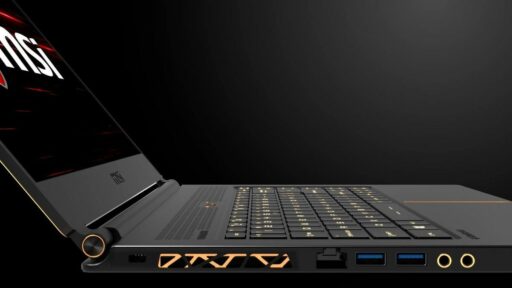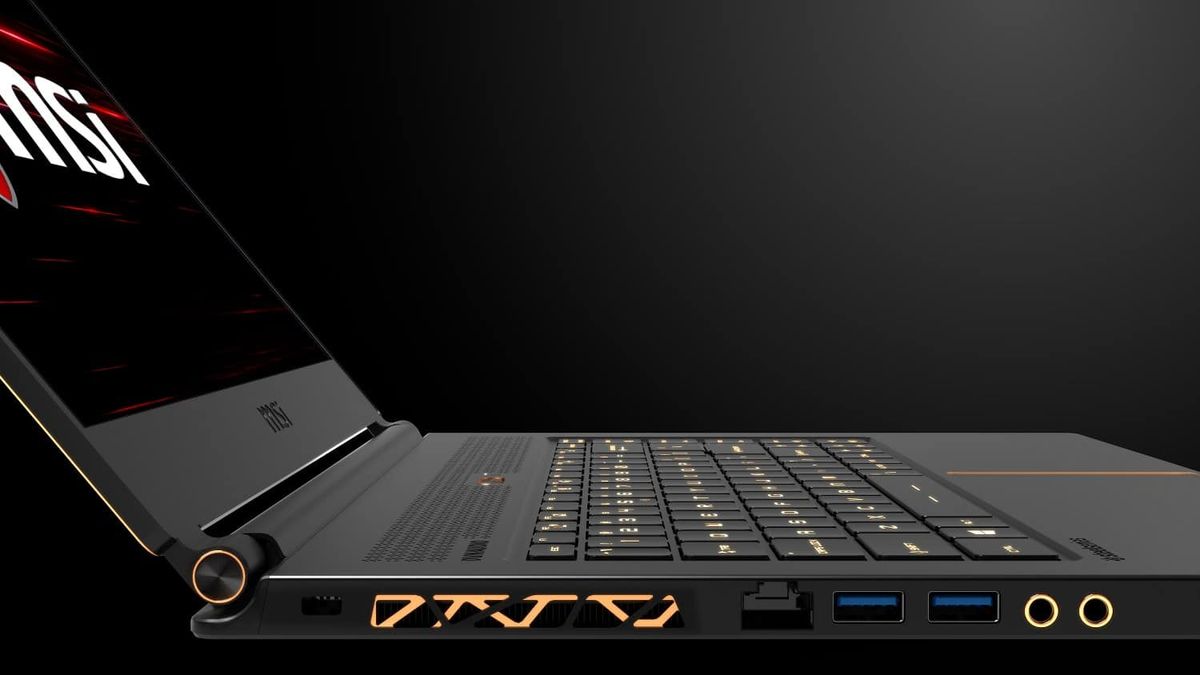In the dynamic and ever-changing landscape of PC gaming, 2023 is set to introduce groundbreaking trends that will redefine the gaming experience. From the rise of immersive gaming with AR and VR to the customization of high-performance gaming rigs, the integration of blockchain and AI, the strengthening of online communities, and strides in accessibility and inclusivity, this year promises to elevate gaming to new heights. Let’s explore the top trends that are shaping the future of PC gaming.
Key Takeaways
- Augmented Reality (AR) and Virtual Reality (VR) are leading the charge in creating immersive gaming experiences, with hardware innovations enhancing player immersion.
- Building the ultimate gaming rig has become a personalized journey, focusing on peak performance components like high-end graphics cards and future-proofing strategies.
- Blockchain and AI technologies are not only revolutionizing gameplay and development but also paving the way for more personalized gaming experiences.
- The social aspect of gaming is evolving with online multiplayer, community building, and streaming platforms playing a pivotal role in gaming culture.
- Accessibility and inclusivity are key focuses in broadening the gaming audience, with adaptive technologies and inclusive game design catering to a diverse player base.
The Rise of Immersive Gaming: AR and VR
Augmented Reality: Blending the Virtual and Real
Augmented Reality (AR) is at the forefront of transforming the gaming landscape, offering a blend of the virtual and real worlds that captivates and engages players like never before. The Apple Vision Pro exemplifies this trend with its mixed reality capabilities, allowing gamers to toggle between full VR immersion and an AR environment where digital objects coexist with the physical space.
The integration of AR in gaming is not just about visual enhancement; it’s about creating a multi-sensory experience that redefines interaction and play.
With the advent of spatial computing, games are no longer confined to screens. Instead, they inhabit the space around us, making every physical environment a potential gaming arena. The real world integration offered by devices like the Apple Vision Pro, with its full-color passthrough cameras, ensures a seamless mixed reality gaming experience that maintains a connection to the physical world for safety and immersion.
Here’s a glimpse at how AR is shaping the gaming experience:
- Merging virtual and real: Digital content overlays on physical surroundings.
- Enhanced interaction: Haptic feedback and sensory integration for a tactile experience.
- Visual realism: Real-time ray tracing and advanced graphics for breathtaking landscapes.
- Safety and play: Blended XR experience with a focus on player’s physical space.
Virtual Reality: Deep Dives into Digital Worlds
The realm of Virtual Reality (VR) gaming is expanding at an unprecedented pace, offering gamers the chance to immerse themselves in digital universes that are more realistic and interactive than ever before. With the integration of advanced imaging, optics, and real-time ray tracing, VR is setting new standards for visual realism and sensory engagement.
The VR gaming market is on a steep incline, with a compound annual growth rate (CAGR) of 31.4% from 2021 to 2028, indicating a future rich with potential and innovation.
Devices like the Apple Vision Pro are at the forefront of this revolution, providing powerful VR capabilities that allow for a truly embodied gaming experience. Players can now feel a sense of presence within virtual environments, whether they’re slicing through fruit in Super Fruit Ninja or navigating the treacherous depths of a dungeon in Demeo.
The integration of VR into gaming is not just about visual spectacle; it’s about creating a seamless blend of the digital and physical worlds. This is achieved through features like full-color passthrough cameras, which anchor players to their physical space while they interact with the game world, offering a safe and blended XR experience.
Hardware Innovations Driving Immersion
The landscape of immersive gaming is being transformed by hardware innovations that push the boundaries of what’s possible. Haptic feedback mechanisms and sensory integration systems are now more sophisticated, providing a tactile dimension to gaming that was once the stuff of science fiction. Real-time ray tracing and advanced graphics are not just buzzwords but essential features that create lifelike environments, making every digital adventure more compelling.
The integration of 3D audio technology is another leap forward, enveloping players in a cocoon of spatial sound that tracks with their movements, offering a truly multisensory experience.
The race for lighter, more powerful VR headsets is on, with new models boasting advanced input systems that accurately mimic real-world interactions. This year’s innovations are not just about performance but also about user comfort and accessibility, ensuring that immersive gaming is an inclusive experience for all.
Customization and Performance: Building the Ultimate Gaming Rig

Selecting the Right Components for Peak Performance
Building the ultimate gaming rig is a balance of power and precision. Selecting the right components is crucial for peak performance, ensuring that every game runs smoothly and looks stunning. The central processing unit (CPU) is the brain of your PC, and opting for a high-performance option like the Intel Core i7-14700K can make a significant difference in processing power.
When it comes to graphics, nothing beats a dedicated graphics card for immersive visuals. A top-tier GPU like the Falcon Northwest FragBox will deliver the fidelity and frame rates needed for a truly immersive experience. Remember, compatibility between components is key; ensure that your motherboard and power supply can support your chosen hardware.
Building a PC that meets your gaming needs requires a thoughtful approach to component selection. It’s not just about the specs, but how they work together to create a seamless gaming experience.
Here’s a quick checklist to guide you through the process:
- Compatibility with your motherboard and power supply
- Balance between performance and budget
- Future-proofing for upcoming game releases
- Aesthetic considerations for your gaming setup
Graphics Cards: The Heart of Visual Fidelity
The graphics card is a pivotal component that dictates the visual quality of your gaming experience. NVIDIA and AMD are at the forefront, offering GPUs like the NVIDIA GeForce RTX 3080 and the AMD Radeon RX 6800 XT, which render lifelike graphics and support advanced features like ray tracing. A powerful graphics card ensures smooth gameplay and stunning visuals.
Investing in a high-end graphics card is not just about the immediate boost in visual quality; it’s about future-proofing your gaming experience against the ever-increasing demands of new game releases.
Choosing the right graphics card involves balancing performance, budget, and future gaming needs. Here’s a quick guide to help you make an informed decision:
- Performance: Look for cards that offer high frame rates and resolutions, especially if you’re into competitive gaming or VR.
- Budget: Determine how much you’re willing to spend. There are options available at various price points that offer good value.
- Future-Proofing: Consider the longevity of the card. It’s worth investing in a card that will remain capable for the next few years.
Remember, the right graphics card can elevate your gaming from good to great, making it a critical investment for any serious gamer.
Future-Proofing Your Gaming Setup
To stay ahead in the fast-paced world of PC gaming, future-proofing your gaming setup is essential. This means selecting components that not only meet current demands but also have the capacity to handle future advancements in gaming technology. Here are some key considerations:
- Expandability: Opt for a motherboard with extra slots and ports to accommodate additional memory, storage, or new peripherals.
- Upgradability: Choose modular components like graphics cards and RAM that can be easily upgraded as technology progresses.
- Power Supply: Invest in a power supply with a higher wattage than currently needed to ensure it can support future hardware upgrades.
Organized cable management is not just about aesthetics; it’s about maintaining an efficient and easily upgradable gaming environment.
By focusing on these aspects, you can build a gaming PC that remains robust and adaptable, ready to embrace the next generation of gaming experiences.
The New Frontier: Blockchain and AI in Gaming

Blockchain Technology: More Than Just Cryptocurrency
Blockchain technology is making waves in the gaming industry, offering more than just a platform for cryptocurrencies. It’s introducing web3 game solutions that provide unprecedented transparency and ownership. With blockchain, players gain true ownership of in-game assets, thanks to secure, verifiable transactions.
The technology also enables novel economic models, such as play-to-earn, where gamers can earn cryptocurrency by playing games. Tokenization on the blockchain adds rarity and scarcity to digital assets, making them more valuable. As blockchain becomes more integrated into gaming, it’s transforming not only the technological landscape but also the player experience, turning gamers into active stakeholders.
Blockchain’s decentralization is a game-changer, eliminating intermediaries, reducing costs, and creating trustless environments that ensure fair play and enable intricate game mechanics through smart contracts.
Some of the top blockchain games in 2023 include exciting RPGs, action-packed adventures, and even casual mobile games, marking a significant year in the evolution of crypto games.
Artificial Intelligence: Revolutionizing Gameplay and Development
The integration of Artificial Intelligence (AI) and Machine Learning (ML) in gaming is transforming the industry at an unprecedented pace. AI’s ability to analyze and predict player behavior leads to more personalized and engaging experiences. For instance, machine learning algorithms can create adaptive difficulty levels, ensuring that each player faces challenges tailored to their skill set.
In terms of development, AI is instrumental in streamlining processes such as game testing and debugging. This not only accelerates the time to market but also enhances the overall quality of games. AI-driven Non-Player Characters (NPCs) are becoming increasingly sophisticated, offering more realistic and unpredictable interactions that heighten the sense of immersion.
The future of gaming is being shaped by AI’s capacity to craft unique adventures for every player, making each experience distinct and memorable.
The table below showcases the diverse areas where AI and ML are making significant impacts in gaming:
| Area of Impact | Description |
|---|---|
| Player Behavior Analysis | Tailoring experiences by understanding preferences |
| Dynamic Content Generation | Creating levels and maps that adapt to gameplay |
| NPC Behavior | Developing lifelike interactions and responses |
| Game Testing | Streamlining debugging and quality assurance |
| Voice Interaction | Enhancing communication with natural language processing |
The Impact of AI on Personalized Gaming Experiences
Artificial Intelligence (AI) is transforming the gaming landscape by offering personalized experiences that adapt to individual player behavior. Machine learning algorithms are at the heart of this revolution, analyzing player data to tailor challenges, storylines, and interactions. This not only enhances the technical capabilities of games but also creates a unique journey for each player.
AI-driven Non-Player Characters (NPCs) are now capable of providing lifelike and unpredictable interactions, which elevate the realism and responsiveness of the gaming world. Games like ‘The Last of Us Part II Remastered’ showcase how AI can lead to highly realistic enemy behaviors, setting a new standard for in-game immersion.
The integration of AI in gaming is not just about automation; it’s about crafting a dynamic and evolving experience that feels uniquely tailored to each player.
The table below highlights how AI and Machine Learning (ML) are enhancing various aspects of gaming:
| Aspect of Gaming | AI/ML Contribution |
|---|---|
| Graphics | Improved visual fidelity |
| Security | Enhanced protection against cheating |
| Matchmaking | Better pairing based on skill level |
| Storytelling | Dynamic narratives that react to choices |
| Player Behavior Analysis | Insights for more engaging content |
Connectivity and Community: The Social Aspect of Gaming

Online Multiplayer: The Thrill of Competitive Play
The realm of online multiplayer gaming is a battleground where skills are honed and legends are born. The competitive spirit fuels a relentless pursuit of victory, driving players to constantly improve and adapt. This dynamic environment not only tests individual prowess but also the strength of teamwork and strategy.
- Communication: Essential for coordinating strategies.
- Skill Development: Players learn and adapt to improve.
- Community: A sense of belonging and shared purpose.
The joy of triumph and the agony of defeat in online multiplayer games are the crucibles in which gaming mettle is tested. Here, every match is a new chapter in a player’s ongoing saga of growth and mastery.
As the digital arena evolves, so too does the technology that supports it, ensuring that the online multiplayer experience remains cutting-edge, inclusive, and endlessly engaging. It’s a journey where gaming experiences are redefined, boundaries are pushed, and players are continuously challenged to elevate their game.
Building Gaming Communities: Beyond the Game
The essence of gaming has transcended the solitary confines of single-player campaigns, evolving into a rich tapestry of community-driven experiences. Building gaming communities has become a cornerstone of the industry, fostering environments where players not only share strategies and content but also form lasting friendships and support networks.
- Engagement: Communities keep players engaged beyond the game itself, offering a platform for discussion, fan art, and shared experiences.
- Support: They provide a support system for both new and veteran gamers, offering help, advice, and camaraderie.
- Growth: Through these communities, games can grow and evolve with player feedback, leading to a more tailored and enjoyable experience.
The creation of a gaming community is a testament to the game’s impact, transforming it from a mere product into a living, breathing ecosystem that thrives on player interaction. It’s not just about playing a game; it’s about being part of a game’s ongoing story.
The Role of Streaming in Gaming Culture
The landscape of gaming has been transformed by the advent of streaming, creating a new paradigm for how games are played, shared, and enjoyed. With platforms like Twitch and YouTube, gamers have the opportunity to broadcast their gameplay to a global audience, turning solitary experiences into communal events.
- Streaming has democratized the dissemination of gaming content, allowing anyone with a decent internet connection to become a content creator.
- The influence of streamers has extended beyond entertainment, affecting game development and marketing strategies.
- Esports and competitive gaming have found a natural ally in streaming services, amplifying their reach and impact.
The symbiotic relationship between streaming and gaming has fostered a culture where community engagement and content creation are as significant as the games themselves.
The entry of major players like Netflix into the game streaming arena underscores the sector’s growth potential. With initiatives to expand beyond mobile platforms and into TV-based game streaming, companies are vying for a piece of the lucrative market. The closure of Google Stadia, however, serves as a cautionary tale of the challenges that lie ahead in this competitive space.
Accessibility and Inclusivity: Broadening the Gaming Audience

Adaptive Technologies for Diverse Gamers
The gaming industry is increasingly recognizing the importance of accessibility, and adaptive technologies are at the forefront of this movement. Innovative devices and software solutions are enabling gamers with diverse needs to experience the joy of gaming without barriers. These technologies range from customizable controllers to voice recognition and eye-tracking software, each designed to cater to specific disabilities.
- Customizable Controllers: Tailored to individual physical needs, allowing for a comfortable and responsive gaming experience.
- Voice Recognition: Enables gamers with limited mobility to control gameplay through spoken commands.
- Eye-Tracking Software: Allows for hands-free navigation and control, opening up new possibilities for gamers with motor impairments.
The goal is not just to play, but to play together. Adaptive technologies are not only leveling the playing field but are also fostering a more inclusive gaming community where everyone can participate. This inclusivity extends beyond the hardware and software, touching the very culture of gaming itself.
Inclusive Game Design: Catering to All Players
In the pursuit of empowering all gamers, the industry is witnessing a paradigm shift towards more inclusive game design. This approach not only enriches the gaming ecosystem but also ensures that a wider audience can enjoy the magic of interactive storytelling.
- Diverse Character Representation: Games are increasingly featuring characters of different genders, ethnicities, and abilities, reflecting the real-world diversity.
- Adjustable Difficulty Levels: To accommodate various skill sets, games now offer scalable difficulty settings, making them accessible to both novice and experienced players.
- Customizable Controls: Players with different physical abilities can tailor control schemes to their needs, enhancing their gaming experience.
The future of accessible game design is not a distant dream but an ongoing journey where gaming experiences are redefined and developers embrace innovation.
As we move forward, it’s crucial that the industry continues to prioritize accessibility, ensuring that games are not just a form of entertainment but a means of inclusion for everyone. The transformative world of accessible game design is not just a niche market; it’s a testament to the industry’s commitment to inclusivity in gaming.
The Growth of Casual and Mobile Gaming
The landscape of gaming is witnessing a significant shift with the expansion of casual and mobile gaming. This trend is not only reshaping the industry but also democratizing access to gaming experiences. The convenience of smartphones has led to a surge in gaming on-the-go, with a plethora of titles available at one’s fingertips.
The integration of AR and VR into mobile gaming is enhancing the appeal of casual games, offering immersive experiences without the need for expensive hardware.
Mobile gaming accessories are becoming increasingly popular, catering to the demand for improved gameplay on smaller devices. Here’s a quick look at some of the accessories enhancing the mobile gaming experience:
- Controller attachments for precision gameplay
- Cooling pads to prevent device overheating
- Portable chargers for extended playtime
Subscription services like Netflix Games and Apple Arcade are carving out a niche in the mobile gaming market, though free-to-play titles continue to dominate. As we move into 2024, the fusion of innovative storytelling, accessibility, and immersive technology will continue to attract millions of new players to the world of casual and mobile gaming.
Conclusion
As we’ve explored the top trends in PC gaming for 2023, it’s clear that the future of gaming is both exciting and dynamic. From the integration of AR and VR to the emphasis on high-performance hardware and the transformative impact of AI, these trends are not only enhancing the gaming experience but also pushing the boundaries of what’s possible. Building the ultimate gaming rig has become a personalized journey, reflecting individual style while incorporating cutting-edge technology. The gaming industry continues to evolve, and staying informed about these trends ensures that gamers can remain at the forefront of this digital revolution. Whether you’re a casual enthusiast or a dedicated esports competitor, embracing these trends will elevate your gaming experience to new heights.
Frequently Asked Questions
What are the expected top trends in PC gaming for 2023?
The top trends for PC gaming in 2023 include immersive gaming with AR and VR, customization and performance in building gaming rigs, the integration of blockchain and AI technologies, enhanced connectivity and community features, and a focus on accessibility and inclusivity.
How is augmented reality (AR) changing the gaming experience?
Augmented reality (AR) is blending the virtual and real worlds, providing gamers with interactive experiences that overlay digital content onto the physical environment, enhancing immersion and engagement.
What role do graphics cards play in PC gaming?
Graphics cards are crucial for rendering high-quality visuals and ensuring smooth gameplay. They are considered the heart of visual fidelity in gaming rigs, enabling gamers to experience games at higher resolutions and frame rates.
How can gamers future-proof their gaming setup?
To future-proof a gaming setup, gamers should invest in easily upgradable components, such as modular graphics cards and expandable RAM. Staying informed about the latest technology trends also helps in maintaining a competitive edge.
What impact is AI having on gaming?
Artificial Intelligence (AI) is revolutionizing gameplay and development by enabling more realistic NPC behavior, dynamic game environments, personalized gaming experiences, and streamlining the game creation process.
Why is inclusivity important in gaming, and how is it being addressed?
Inclusivity ensures that gaming is accessible to a broader audience, including those with disabilities. It is being addressed through adaptive technologies, inclusive game design that caters to all players, and the growth of casual and mobile gaming which attracts diverse gamers.





